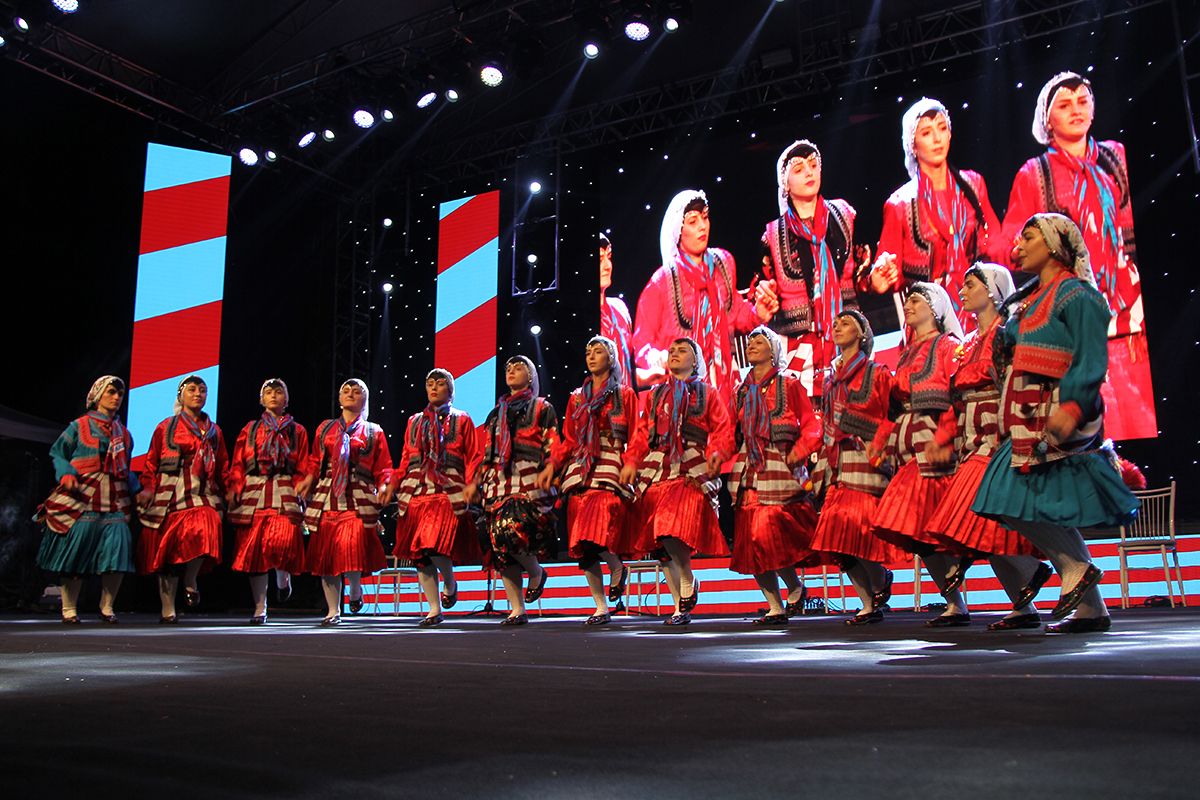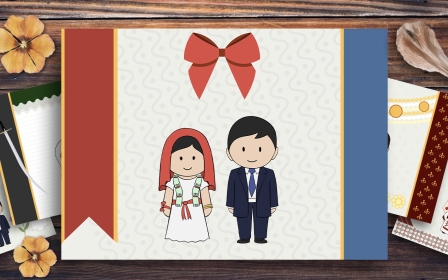Turkey: Three popular dances and the history behind them
It’s no secret that Turkish people love to dance. While in most cultures, people break out in dance during weddings and special occasions, for Turkish people, it’s also very normal to dance during protests, national holidays, and even when campaigning for an election.
Recently, Istanbul’s mayor, Ekrem Imamoglu, rolled up his sleeves and started dancing on stage in Trabzon, to a crowd of cheering people. Dancing is such an intrinsic part of Turkish culture, that it never really seems out of place.
But it’s never just a freestyle - rarely will you find a simple head bop or someone swaying with no rhythm. Turkish dancing always has structure and specific form.
While dances vary from region to region, most of the moves have been passed down from previous generations and have historical significance.
Here, we take a look at the three main styles of Turkish dances found around the country.
New MEE newsletter: Jerusalem Dispatch
Sign up to get the latest insights and analysis on Israel-Palestine, alongside Turkey Unpacked and other MEE newsletters
1. Halay
One of the most popular dances, seen all over Turkey, but particularly in the east and south-east of the country, is the Halay.
Taking the formation of a long line that curves into a semi- or full circle, there is no limit to the number of people who can join in. Each dancer must intertwine their hand or finger with the individuals on either side, before moving round anti-clockwise with certain steps in time to the music.
Both men and women can dance together, and the tempo often speeds up as the line grows accustomed to the footwork.
While it may look extremely similar to the Greek Sirtaki or the Arabic Dabke, Turks would argue it is nothing of the sort; according to them, the Halay’s origins stretch right back to old Turkish mythology and its shamanistic roots in Central Asia.
There are mentions of the dance in legends, and Central Asian shamanic rituals also included dancing in a semi-circular or circular formation around a fire.
Today, Turks still dance a Halay around a fire on certain holidays and occasions, such as the seasonal festivals of Nowruz or Hidrellez.
The word "Halay" itself is thought to have been derived from the phrase "Al-Hal" which carries the meaning of "fire" and "society".
When it comes to doing the Halay, the most important position is the leader, known as the halaybasi.
The chosen halaybasi is usually someone who is respected and who knows the dances well, and they are in charge of setting the steps and pace.
But, a halaybasi is nothing without their handkerchief. By waving the handkerchief as they dance, the halaybasi keeps the rest of the dancers in time and in line.
However, the handkerchief isn’t just useful; it is also thought that it has links back to shamanistic rituals, where coloured ribbons, shields, flags and axes were waved during dancing to remove any bad spirits.
Finally, the Halay must have music. The two indispensable instruments for this dance are a drum and pipe, known as the davul and zurna.
While the zurna pipe has been an essential part of the Halay since the 14th century, the davul drum goes much further back. Prehistoric cave paintings found across modern-day Turkey, Azerbaijan, Kazakhstan and Kyrgyzstan, for example, depict figures dancing in Halay formation with a drum. As a result, the davul drum still takes centre stage.
Not only does the halaybasi move the group in time to the drum’s beat, but often the halaybasi will break away from the line to dance with the drum independently, dipping and jumping as the beat continues.
2. Horon
The Horon is the favoured dance for those in the northern Black Sea region of Turkey. Considered a much-cherished tradition, the dance was added to the Unesco Intangible Cultural Heritage list in 2021.
Accompanied by either a small stringed instrument known as a kemence, or a form of bag-pipe called a tulum, the dance is made up of three sections with participants once again interlocking hands. To help dancers segue into each phase easily, the leader of the Horon shouts commands signalling change.
The first part begins slowly, with steps forward and twists back, before gradually increasing in tempo. As the pace quickens, the dancers lift their hands and straighten their body.
The second section then follows. Hands are lowered, the back is bent and much more complicated footwork sideways, forwards and backwards ensues while the shoulders shimmy.
Finally, the last segment begins, with an even faster tempo, rapid shoulder shimmying and stamping of the feet until the music ends.
The dance is not without its symbolism.
For example, the lifting of the hands is said to be a show of strength and bravery, while bending or crouching represents field workers resting.
The rapid shoulder shimmying and fast tempo, on the other hand, are thought to portray the rough Black Sea waves and the darting movements of the anchovy fish famously caught in the area.
Both men and women can dance a Horon, either separately or together, and traditional costumes are often worn.
The women’s costume generally consists of a colourful shirt and jacket, a headscarf, and a long, vibrant skirt over a shalwar.
The men’s outfit, however, is black and white with a great number of accessories. These include a belt with long strips of black leather to which hunting gear or weapons can be attached; a pocket watch with chains that hang across the chest; and a muska - a small triangular box hung around the neck that contains a written note, such as a prayer, to ward off evil.
The origins of the dance are still unclear, but some believe it to be Greek, saying that the name derives from the Greek "xoros" – which is a type of dance performed in a circle.
Others argue that it came from mediaeval Genoese settlements, stating that it is rooted in the medieval French dance "Carole", which can also be pronounced "Horol".
For those not convinced by either argument, there is also a Turkish origin of the word: horom, the word for a stook of corn. Just as the corn is tied tightly in a ring, they say, so is the Horon danced in a ring formation.
Whatever its roots, the Horon folk dance is key to the culture and is known by both young and old.
The dance was also the chosen style that Istanbul Mayor Imamoglu took part in while electioneering.
3. Zeybek
In the west of Turkey, the Zeybek reigns. Choreographed to represent strength and heroism, this dance is very different to the Halay or Horon. With no interlinking of the hands, each individual dancer stands alone.
The arms are held out from the body, before being lifted into the air. Slow, deliberate steps are then taken before the dancer crouches, touches the ground with his knee and straightens up.
These movements are repeated in a circular pattern in time to a slow davul drumbeat and zurna pipe.
Although the origin of the Zeybek is still debated – with some suggesting it might have roots in ancient Greece or Europe – the most widely believed origin is the 16th-century Ottoman Empire.
During this era, the region saw a lot of political and social turmoil, which caused small groups of men to rise up and protect their village. A type of unofficial soldier, these men were known as zeybeks, and their leader was known as an "efe". It is thought the dance not only takes its name from these men, but also represents them – hence the strong, noble dance moves.
Historically, the dance has been mainly for men due to its origins. When it comes to costume, a short, jodhpur-style trousers are worn just to the knee.
The look is also accompanied by a fez decorated with crocheted flowers to represent the mountains, a tassel and a cummerbund of silk into which a gun can be tucked; and a long pair of black boots.
Women started to join in the dance in 1916, when a physical education teacher, Selim Sirri Tarcan, known as "Sari Zeybek", tweaked the existing dance moves to instead symbolise and represent the love between a man and a woman.
In 1925, Tarcan performed this dance with a student at a conference attended by then Turkish President Mustafa Kemal Ataturk. Having enjoyed the dance, it is said that Ataturk stated that the Zeybek should take place in social salons with women.
This article is available in French on Middle East Eye French edition.
Middle East Eye delivers independent and unrivalled coverage and analysis of the Middle East, North Africa and beyond. To learn more about republishing this content and the associated fees, please fill out this form. More about MEE can be found here.







